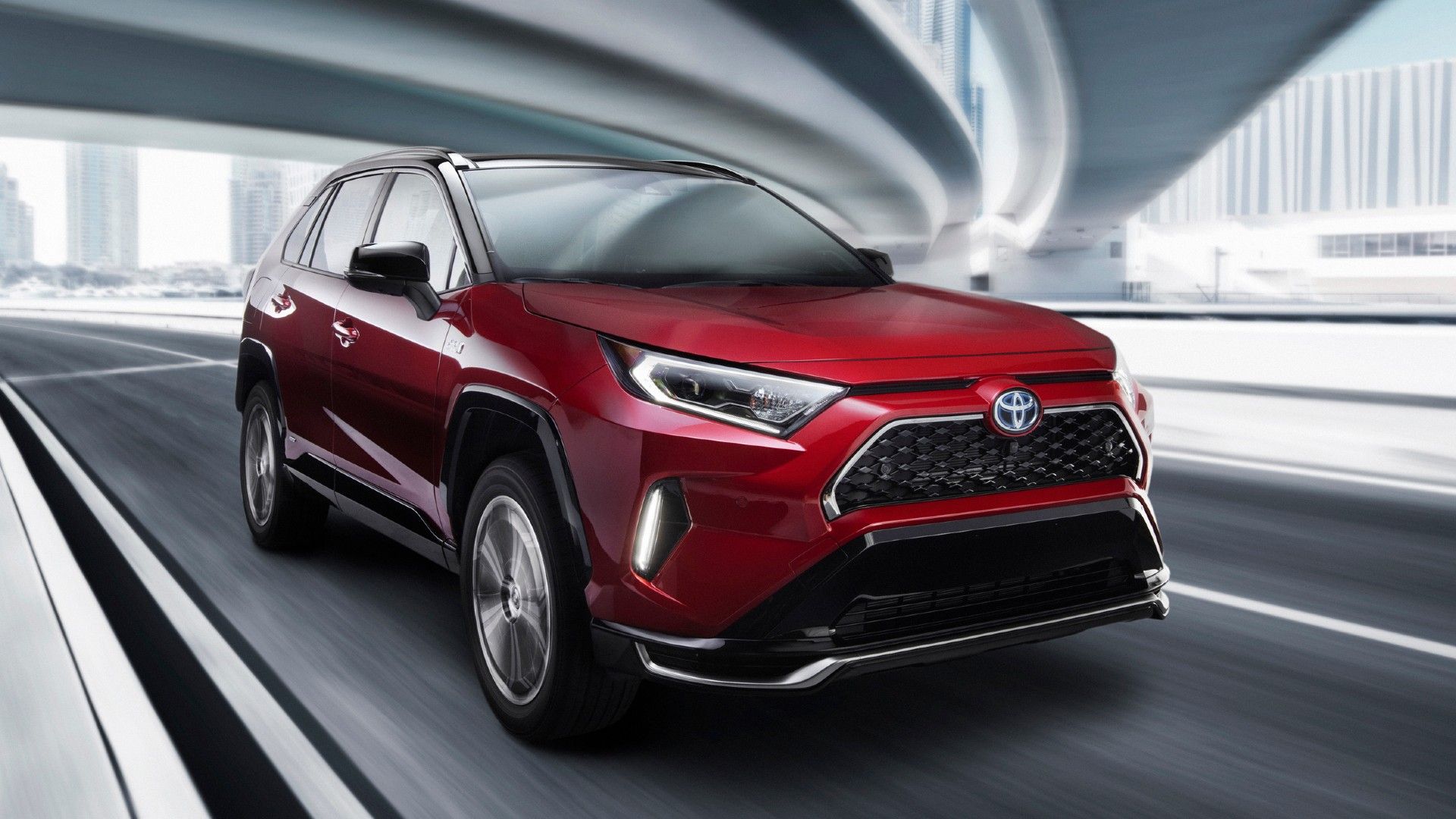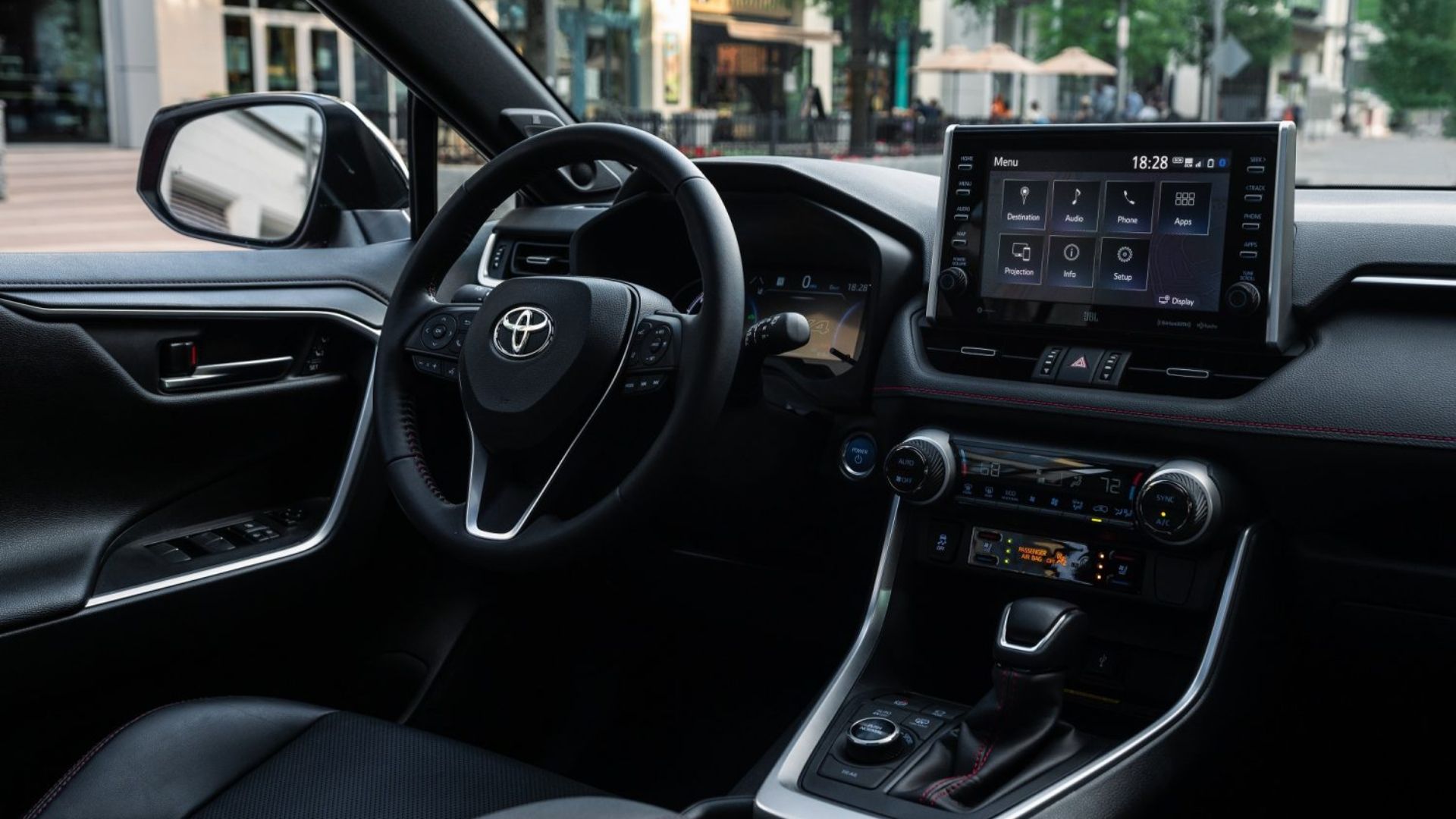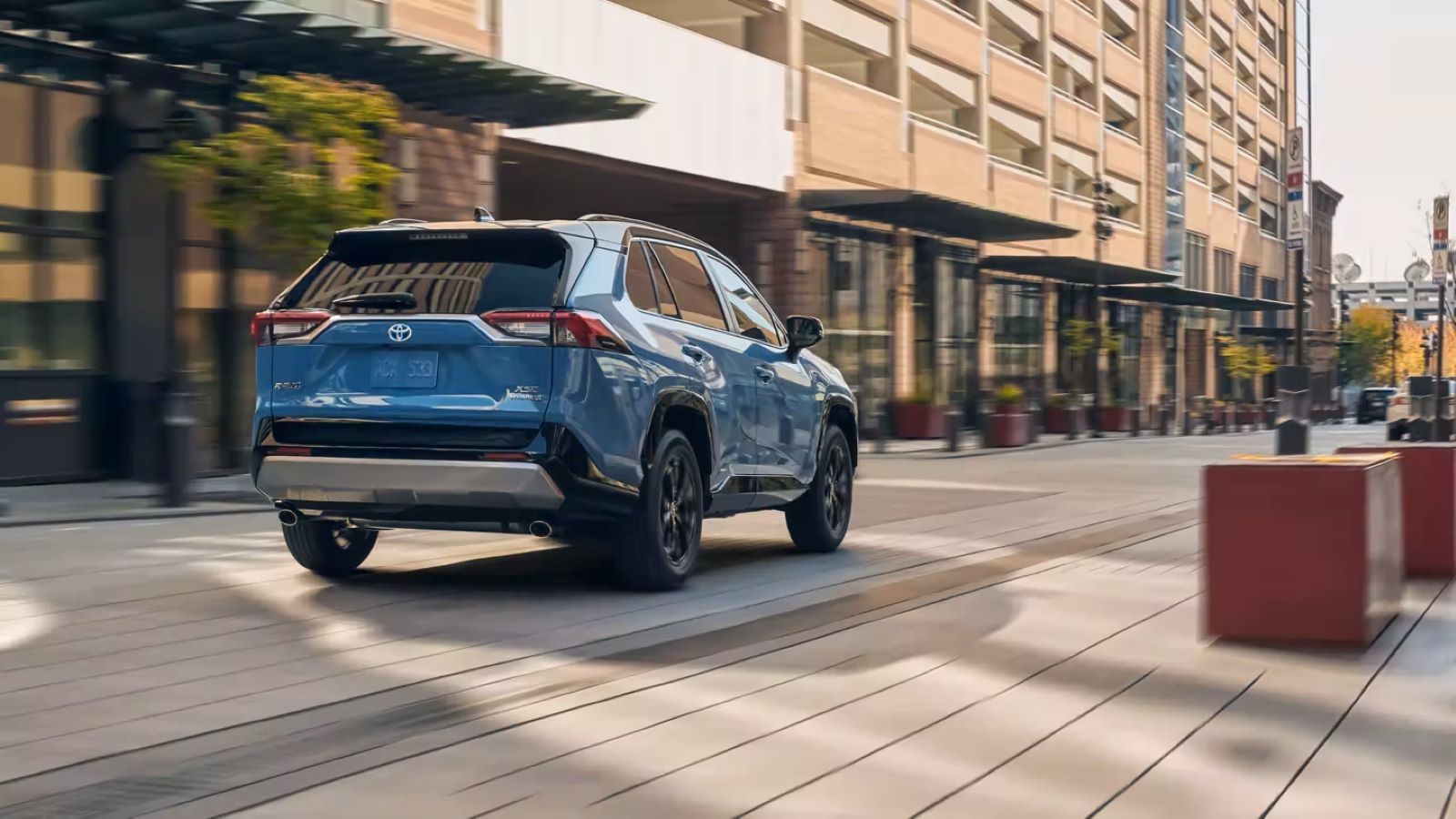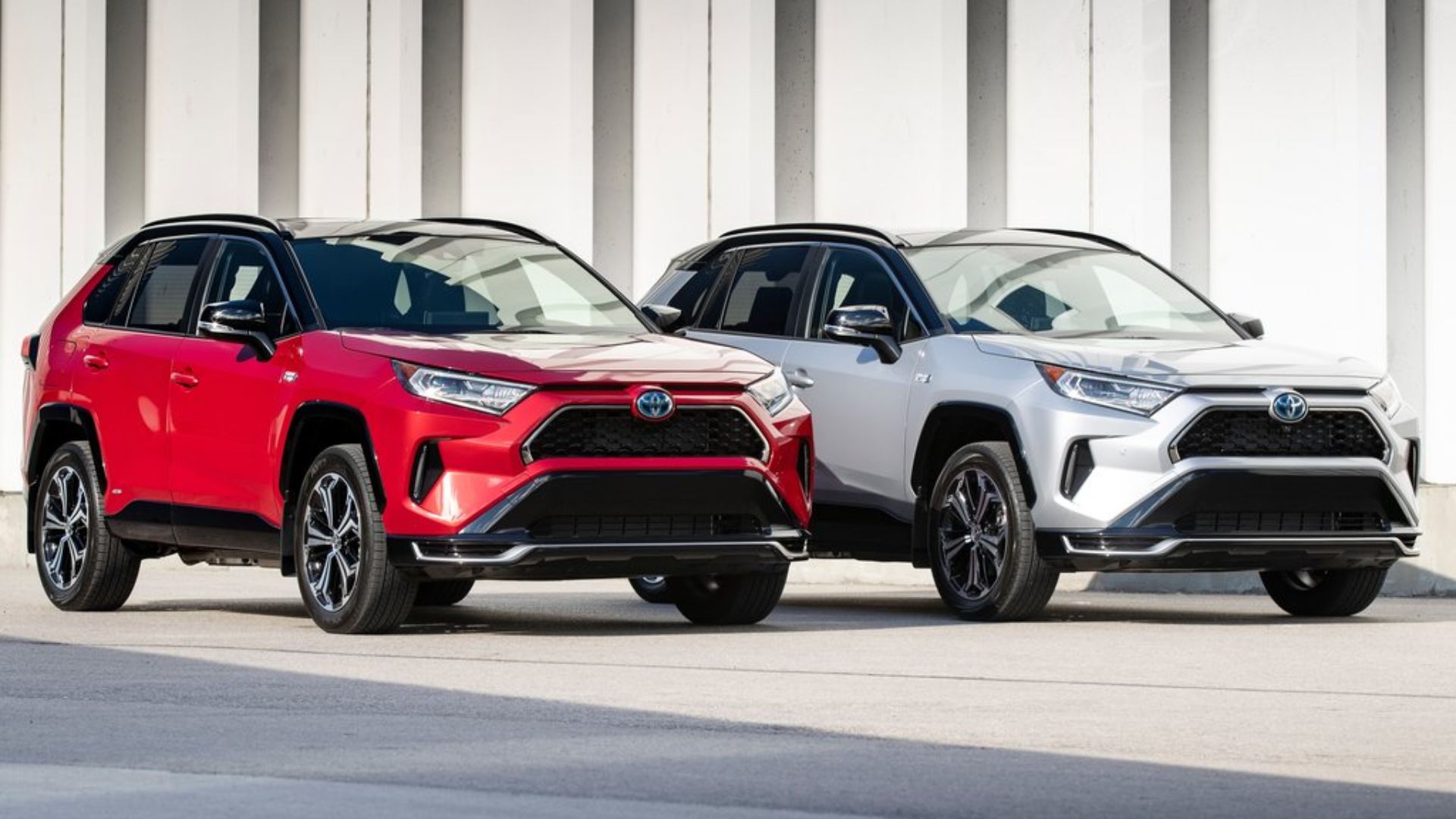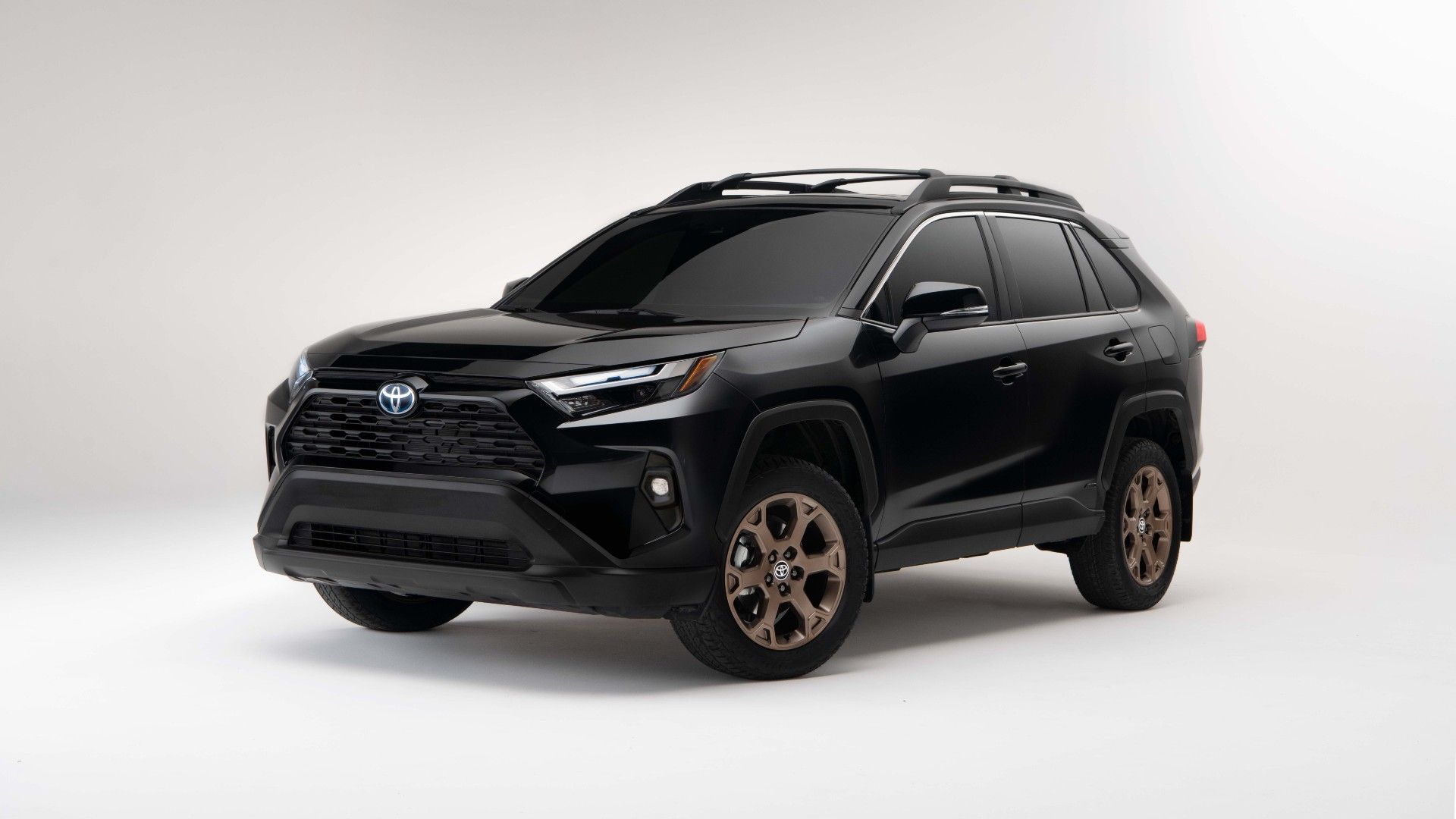The engineers at Toyota sat down at the beginning of the 90s with the plan of creating a sport utility vehicle (SUV) that would not only combine the elements of a road-going car and an off-road vehicle, but also add the features of a compact car, like drivability into the mix. The first generation RAV4 debuted in 1994 and was the first car with a “true” SUV to have the feel and the look of a unibody platform. It provided a more nimble alternative to the still immensely popular large SUVs.
The Toyota RAV4 was the first true crossover to hit the market, and now it’s the best-selling SUV not just in North America, but the planet. Buyers have been enticed by the sporty looks, overall drivability, excellent features, stellar economy, and low maintenance costs ever since it first hit the market. And in 2017, when the SUV first sold over 400,000 units, the RAV4’s dominance became undisputed in its category.
Still, what exactly makes this car so appealing to drivers across the globe? Is it Toyota’s long-standing association with reliability and longevity? Is it the wide variety of available trims? Is it the advanced safety features and driving technology that make the 2023 Toyota RAV4 a bestseller? In this article, we’ve rounded up ten reasons that make the RAV4 a favorite across the board.
10 The RAV4 Is A Versatile Vehicle
Another reason why the RAV4 is such a massive hit in the market is because of its longevity and reliability which has become a trademark for nearly all Toyota models. Furthermore, the RAV4 offers something for everybody: The wide range of trims available can cater to various driving styles, needs, and budgets. Also, the Toyota RAV4 is among the most versatile C-SUVs (compact sport utility vehicles) available at the moment, combining the usefulness of an SUV paired with the efficiency and the nimbler handling of smaller cars, like sedans.
Furthermore, all 2023 Toyota RAV4 trims offer spacious cargo room: 37.6 cubic feet behind the rear seats, which can be extended to 69.8 cubic feet with the seats folded down. This makes the car one of the most spacious cars in its category. Lastly, there’s also enough room for five passengers, and enough power to still make the spacious car feel sporty. Not to mention, it’s also capable of hauling your things around. Check out the towing capacity across the Rav4 model range below:
Toyota Rav4 Towing Capacity
|
Trim |
Towing Capacity |
|
LE |
1,500 |
|
XLE |
1,500 |
|
XLE Premium |
1,500 |
|
Adventure |
3,500 |
|
TRD Off-road |
3,500 |
|
Limited |
1,500 |
|
Hybrid LE |
1,750 |
|
Hybrid XLE |
1,750 |
|
Hybrid Woodland Edition |
1750 |
|
Hybrid XLE Premium |
1,750 |
|
Hybrid SE |
1,750 |
|
Hybrid XSE |
1,750 |
|
Hybrid Limited |
1,750 |
|
Prime SE |
2,500 |
|
Prime XSE |
2,500 |
9 It Has A Long-Standing Tradition Spanning Almost Three Decades
The 2023 Toyota RAV4 marks the SUV’s fifth generation. First introduced in North America in 1996, it was the first SUV that came with compact car-like features. Even the first generation of the car offered a variety of nice features, such as a rolling soft top and hardtop variations and came in front-wheel or four-wheel drive options.
For its time, the 2.0-liter, four-cylinder engine offered a respectable 119 horsepower, which was increased to an even more appealing 127 horsepower in 1997. Later generations, like the second-generation model, either offered a 2.0-liter or a 2.4-liter powerplant, pumping out 148 and 161 horsepower respectively.
Later and current generations also started offering more and better safety and driving features, while power also received a considerable increase. Today, the 2023 Toyota RAV4 lineup has grown to include a 2.5-liter engine that’s capable of generating 302 horsepower, in the case of top-tier models.
8 It Is Spacious With An Excellent Interior
We’ve talked about cargo space above and also briefly mentioned the space available for passengers. To be more specific about the latter as well, the 2023 Toyota RAV4 offers a spacious five-passenger layout with a total passenger volume of 98.9 cubic feet, while the overall interior volume is 136.4 cubic feet.
These impressive numbers make the compact SUV a great car for long road trips, regardless of passenger seating. Cargo space might not be the best as with seats up/down, the RAV4 gets 37.6 and 69.8 cubic feet, which is larger than the Honda CR-V with the seats up but smaller when they’re down (36.3/76.5 cubic feet). On the other hand, another Toyota rival, the Subaru Forester gets only 26.9 cubic feet of cargo space when the seats are in an upright position.
But, the RAV4 isn’t just about cargo and passenger space. The C-SUV also boasts great interior design, which some might find more functional than luxurious, but still, there are enough soft-touch materials and double-stitching in the car that make it feel more sophisticated. Earlier models, like the third-gen RAV4, also offered three-row seating, not to mention a V-6 engine, generating a respectable 269 horsepower.
7 There’s A RAV4 For Everyone
Available with two different engines, a total of fifteen trims, front-wheel drive or all-wheel drive, various towing capacities, and generally good to great fuel efficiency, there’s a RAV4 that will probably fit the need of every buyer. The base model starts slightly under $30,000, making it a great choice for the budget-conscious buyer who still wants efficiency, reliability, and great safety features.
Those who are looking for a little more “oomph” and like to take their car on more challenging and less forgiving terrain can opt for the TRD off-road-optimized variant that has revised damper tuning and off-road-tuned coil springs.
The RAV4 can also be alluring for the more performance-oriented crowd. More specifically, Toyota also offers the Prime models, which puts emphasis on power figures. And, with a combined output of over 300 horsepower and on-demand electronic all-wheel drive, controlled continuously variable transmission, that also comes with an optional shift mode, the RAV4 Prime might not be the dictionary example of a sleeper, but it will definitely demand some respect when you put your foot on the gas pedal.
6 RAV4 Equals Legendary Toyota Reliability
Toyota has been synonymous with longevity and reliability, and the RAV4 is no exception. And while there are some known issues with the newer models (like EVAP canister replacements, catalytic converter failure, and oxygen sensor problems), throughout its generations, the RAV4 has consistently been held as a reliable car that’s capable of lasting for a long time and many-many miles with the right maintenance.
As a matter of fact, the Toyota RAV4 is among Consumer Reports’ most reliable models with the brand generally getting at least four out of five stars. Additionally, the J.D. Power score for the latest generation is 82 points out of 100, which means that the SUV will be road-worthy for many miles as long as it’s maintained properly.
5 At The Forefront Of Modern Safety Tech
Thanks to modern technology, the RAV4 is among the safest crossovers on the road. In 2018 the Toyota RAV4 received the NHTSA 5-star overall safety rating. This safety-first approach also carried over to newer models. The latest iteration of the RAV4 comes with the Toyota Safety Sense 2.0 tech, which is the manufacturer’s comprehensive driver assistance and safety system. It comes with:
- Dynamic radar cruise control
- Lane-tracing assist
- Automatic high beams
- Lane departure alert
- Road sign assist
- Pedestrian detection
- Forward collision warning
- Automatic emergency braking
Also, these features aren’t just for show – they genuinely help the driver navigate the road safely, making them all the more useful. Combine them with the functional infotainment system and other useful tech, and you can see that the RAV4 delivers a pretty appealing package for a “simple” C-SUV.
When looking at the competition, the RAV4 boasts several excellent features that people don’t find on other models. For instance, the traffic sign reader isn’t something you’ll get with a Subaru Forester, and the RAV4 comes with more driving aids, like Road Sign Assist, than, for example, its other competitor, the Honda CR-V.
4 Cost-Effective And Fuel-Efficient
Hybrid engines and modern internal combustion technology make any trim of the RAV4 a reliable and effective car with appealing ongoing maintenance costs. According to expert estimates, yearly maintenance of the RAV4 will average out to around $5,531 during its first ten years, which is a considerably better figure than the industry average for its class, which is around $3,062 higher. Another crucial feature is the gas mileage you can get with these cars. The gasoline powerplants will do anywhere from 28 to 30 MPG, while the hybrid models will do between 37 and 40 MPG.
To be more specific, government sources claim that the 2023 Toyota RAV4 AWD Hybrid with the 2.5 four-cylinder engine gets a combined mileage of 40 MPG, which still isn’t too shabby for its class. When looking at gasoline-only features, the Subaru Forester gets similar mileage to the RAV4, with EPA numbers ranging from 26 to 29 MPG.

